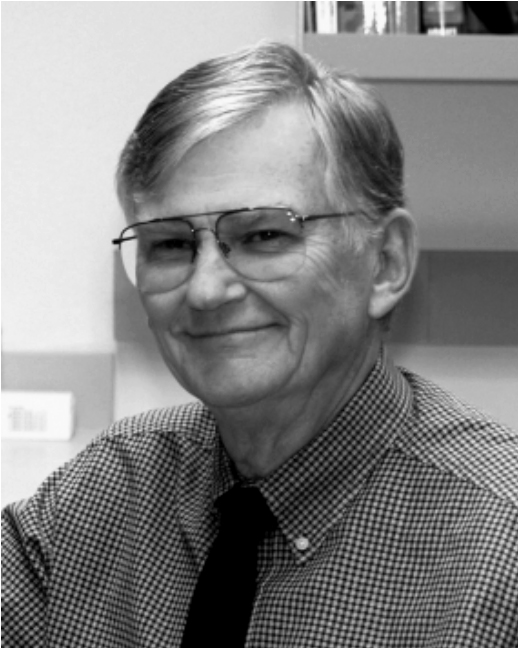
Edward L. Gillette, DVM, PhD, died on November 17, 2006 as a result of metastatic prostate cancer. Ed received his DVM from Kansas State University, and a PhD in Physiology/Radiation Biology from Colorado State University. Ed never left CSU following his graduate program, advancing to the rank of Professor, with service as Department Head and Associate Dean, and spearheading the development of the Animal Cancer Center at CSU, one of a few multidisciplinary centers of excellence for animal cancer care in the world.
Ed was a multifaceted individual. One side of Ed was that of a veterinary diagnostic radiologist, having passed the first certification examination ever administered by the American College of Veterinary Radiology. Although Ed subsequently co‐authored a textbook on Veterinary Radiology, this specialty took second place to his love of oncology.
In his early days, Ed studied at Colorado State University with William D. Carlson, DVM, PhD, one of the founding Diplomates of the American College of Veterinary Radiology. Bill Carlson introduced Ed to the concept of radiation therapy of naturally occurring tumors in pets, a concept that guided Ed’s scientific and clinical efforts for decades to come.
Ed and Bill began their work in radiation oncology using an orthovoltage X‐ray machine. This was followed by work with cobalt photons. And then through Ed’s futuristic spirit, he spearheaded the installation of the first linear accelerator in the world dedicated to treatment of spontaneous tumors in pets at the Veterinary Teaching Hospital at Colorado State University
Ed’s accomplishments are difficult to encapsulate, spanning so many different areas. But basically, they center on clinical veterinary radiation oncology and experimental radiation oncology revolving around the study of canine tumors as a model of human cancer.
With regard to clinical work, Ed pioneered the use of radiation for cancer treatment in pets. This was occurring at a time when veterinarians and pet owners were not too excited about this prospect. However, Ed conducted radiation therapy with a systematic and scientific approach and overcame reluctance on the part of animal owners and referring veterinarians. Ed trained a number of veterinarians in the art and science of radiation therapy, and he was one of the Charter Diplomates of the Recognized Veterinary Specialty of Radiation Oncology. Interestingly, the other 3 Charter Diplomates had been trained in radiation oncology at Colorado State University by Ed Gillette.
Ed also pioneered the study of spontaneous tumors in animals as a model of human cancer. This vision was enhanced through discussions with Herman Suit and H. Rodney Withers, then both radiation oncologists at M.D. Anderson Cancer Center in Houston. Ed spent a year’s academic leave at The Anderson in 1968–1969, and this experience heightened Ed’s enthusiasm for prospective research, and narrowed his focus of work primarily to assessment of the effects of ionizing radiation on normal tissue and experimental cancer therapeutic approaches.
I had the privilege of working directly with Ed for 5 years, though our collaborations subsequently stretched over decades. I went to Colorado State University in 1969 for a training program in diagnostic radiology. Ed had just returned from his academic leave at The Anderson, and his enthusiasm for cancer investigation quickly rubbed off on me. I ended up completing a graduate degree in radiation biology, with Ed as my Major Professor, studying the combination of radiation and hyperthermia in murine tumors. Ed and I also developed a friendship that was closer than most mentor–student relationships. We often laughed until we cried, many times with smoldering cigars and ice clinking in a glass of Wild Turkey. Studying radiology with Jack Lebel and radiation oncology with Ed Gillette was one of the most stimulating, exciting and enjoyable times of my life.
Ed was able to acquire over $20M in research funding during his career at Colorado State University. He also trained dozens of graduate students who have gone on to successful scientific careers. He helped thousands of pets battle cancer through his clinical radiation oncology activities, an effort that also enhanced the lives of the owners of these animals. Ed’s work lives on through the scientific productivity of his trainees and through the activities of today’s specialists in veterinary radiation oncology.
With Ed’s passing I have lost a dear friend and the ACVR has lost a visionary leader. Many of you did not know Ed, this is your misfortune. However, we are all lucky to have had him in our College for his efforts and accomplishments have enriched our life whether we consciously recognize that or not.
Author: Don Thrall